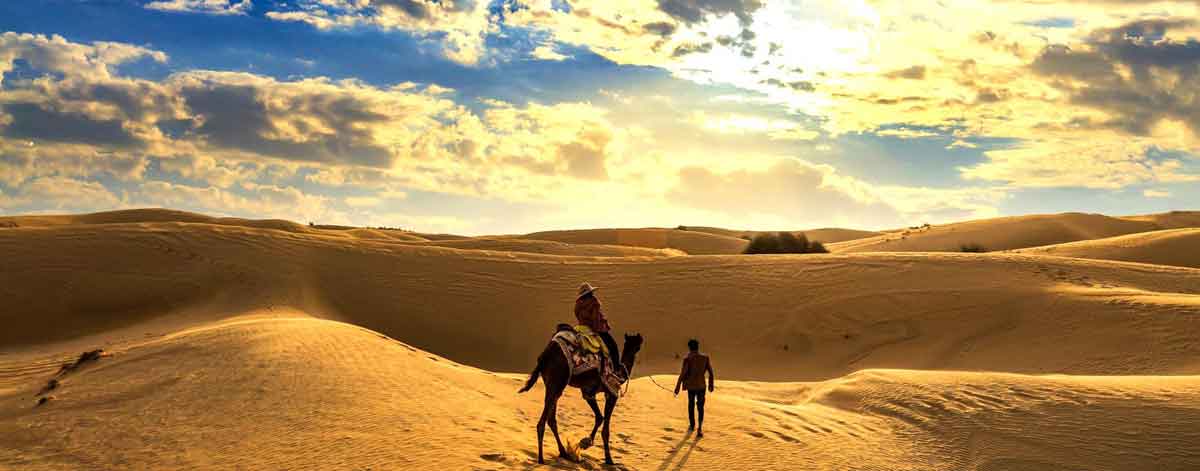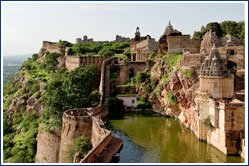
 Chittorgarh lying on the banks of the Berach River was a former capital of the kingdom of Mewar and is synonymous with pride, romance and chivalry.
Chittorgarh lying on the banks of the Berach River was a former capital of the kingdom of Mewar and is synonymous with pride, romance and chivalry.
Chittorgarh is believed to have been built by the Mauryas in the 7th century AD. Originally known as Chitrakut after Chitrang Maurya (Mori), a Rajput chieftain, the magnificent Chittorgarh Fort is surrounded by a circular wall with seven gates. According to some accounts, the Mori dynasty was in control of the fort when Bappa Rawal who founded the kingdom of Mewar seized Chittorgarh and turned it into his capital in 734 AD. However other accounts say that Bappa Rawal received it as part of the dowry after marriage with a Solanki Princess. One of the most prized seats of power in Rajasthan, it saw many glorious battles being fought over its possession. It served as Mewar’s capital for 834 years. Apart from some interruptions, the fort has always been in the possession of the Sisodias of the Guhilot (or Gehlot / Guhila) clan of Rajputs, who are believed to have descended from Bappa Rawal.
The inhabitants of Chittorgarh always chose death instead of surrender. The tales that have been passed down through generations tell us of its rich past. Chittorgarh was captured in 1303 by Ala-ud-din Khilji. Legend has it that this was because of his passionate desire to abduct Rani Padmini. However she preferred death to dishonour, and committed Jauhar (an act of self immolation) along with other ladies of the court while the men left the fort to fight the enemy till death. Recaptured in 1326 by Hammir Singh, a scion of the same Gehlot clan, the dynasty started by him came to be known as the Sisodias.
Chittorgarh is famous for its association with two famous historical figures. One is Meera Bai, the famous female Bhakti poetess and Maharana Pratap, son of Rana Udai Singh II regarded as a personification of the values Rajputs cherish and die for. Also known as the "Bhakti aur Shakti ki nagari" (Land Of Devotion And Strength), Chittorgarh hosts the biggest Rajput get-together “Jauhar Mela" which commemorates the bravery of Rajputs and the Jauhars which happened at Chittorgarh.
Things to see in Chittorgarh
Chittorgarh Fort
Symbol of the Rajput bravery and sacrifice, the Chittorgarh Fort lies on a steep 180 m high hill. The second and third gates have two chattris (cenotaphs) built to honor Jaimal and Patta, two brave soldiers who died fighting the Mughals. The Fort has many beautiful palaces like Rana Kumbha Palace, Padmini Palace and Fateh Prakash Palace.
Rana Kumbha Palace
A beautiful monument inside the Chittorgarh Fort, it is where Queen Padmini committed Jauhar (self immolation) during the siege of Chittorgarh by Alauddin Khilji.
Padmini Palace
Lying beside a beautiful lotus pool, this is where Alauddin Khilji saw the reflection of Queen Padmini in a mirror and was mesmerized by her beauty.
Vijay Stambh (Tower of Victory)
Built by Maharana Kumbha in 1440 AD to commemorate his victory over Mahmud Khilji, this tower is adorned with sculptures of Hindu deities. Around 157 narrow steps lead to the terrace, which offers a stunning view of Jaisalmer.
Kalika Mata Temple
Though it was originally built as a Sun Temple, it was later converted into Kalika Mata Temple in the 14th century AD.
Nearby Attractions
From Chittorgarh, you can visit places like Menal famous for its 12th century temples, the Bassi Wildlife Sanctuary, the 16th century Bijapur Castle and Sita Mata Sanctuary.